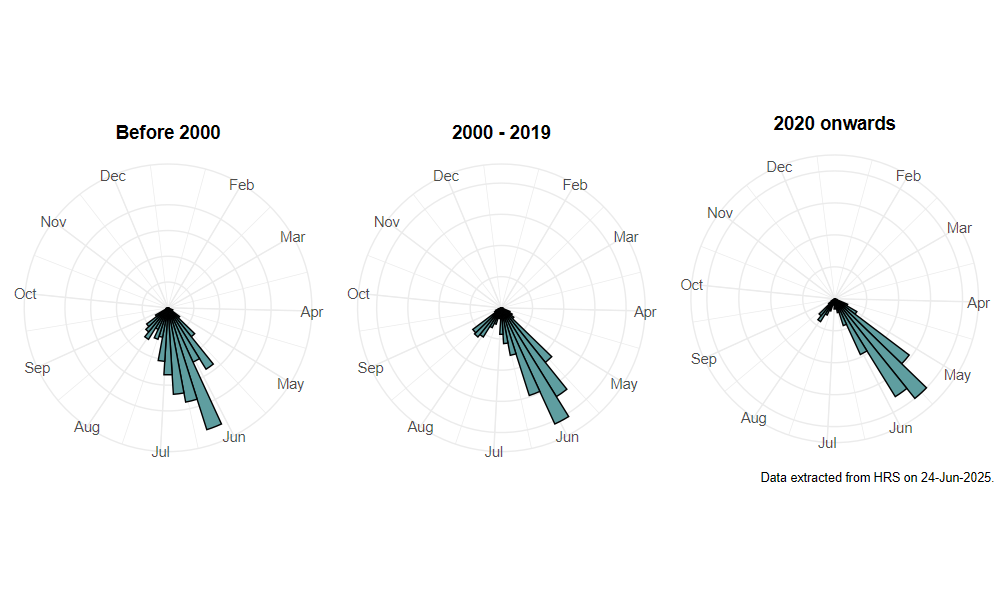Pipiza austriaca Meigen, 1822
Identification
Identification difficulty = 3. ![]()
![]() according to Ball & Morris, 20241
according to Ball & Morris, 20241
Biology
The larvae of this genus are aphidophagous, generally favouring aphids which secrete a waxy flocculence (woolly aphids). But the larva of this species has been reared on Cavariella aphids on Hogweed Heracleum sphondylium. Adults are usually found resting on vegetation along woodland margins, although they occasionally visit flowers.
Flight period
The following plots show the number of unique records per week excluding those reported to be of immature stages.

Distribution
This is one of the most readily identified Pipiza and consequently is probably better recorded than many others in this genus. Widespread but local in southern England, apparently becoming scarcer to the west and north, with records extending into southern and central Scotland.

Trends
The following plots show the Frescalo TFactor vs year and a map of the rescaled frequency (all records) for the species.
-
Ball, S., & Morris, R. (2024). Hoverflies of Britain and Ireland. WILDGuides (3rd ed.). Oxford: Princeton University Press. ↩